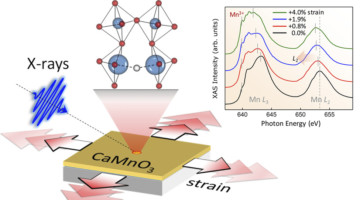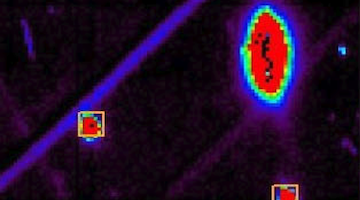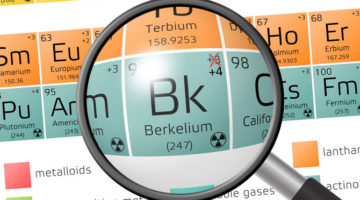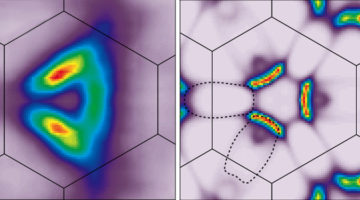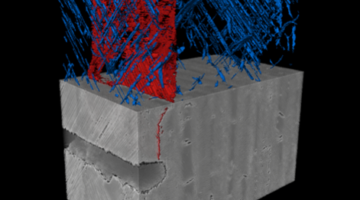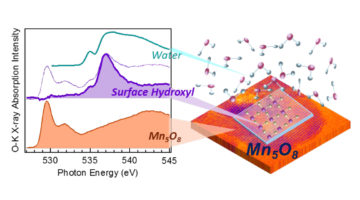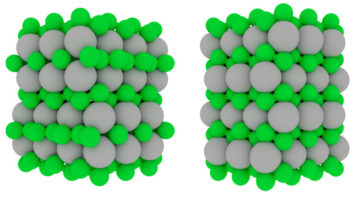Researchers have demonstrated a novel way to systematically strain-engineer oxygen vacancies in complex transition-metal oxide thin films. The work advances our ability to tailor such defects, small changes in which can lead to dramatic changes in material properties such as conductivity and magnetism. Read more »
Strain Turns Tin into a 3D Topological Dirac Semimetal
A small amount of compressive strain turns a nonmetallic form of tin into a 3D topological Dirac semimetal—a kind of “supermetal” with very high electron mobility. With its rich topological phase diagram, the material shows promise for both novel physics and eventual device applications. Read more »![]()
![]()
Modulating Infrared Light with 2D Black Phosphorus
Two-dimensional materials represent a promising new frontier in the field of optoelectronics. Most progress so far, however, has been in the visible-light range. Now, at the ALS, researchers have measured the infrared transmission spectra of ultrathin samples of black phosphorus under an applied electric field. Read more »![]()
![]()
New Insights into Nanoscale Deformation
A group of scientists used Laue x-ray microdiffraction at the ALS to probe plastic deformation mechanisms at the nanoscale. Their findings may overturn conventional theory and reshape our understanding of the mechanical behavior of a host of nanocrystalline metals. Read more »
How Berkelium Stands Out in a Heavy Metal Crowd
Using several spectroscopic techniques, scientists found that the element berkelium breaks form with its heavy-element peers by taking on an extra positive charge when bound to a synthetic organic molecule. This property could help scientists develop better methods for handling and purifying nuclear materials. Read more »
ARPES Overturns V2O3 Metal-to-Insulator Theory
Researchers report on angle-resolved photoemission spectroscopy (ARPES) measurements performed on the transition-metal oxide V2O3. The results overturn a decade-old theory about metal-to-insulator transitions in this material and provide a spectroscopic benchmark test for future models. Read more »![]()
![]()
GE Aviation Delves into Advanced Materials at the ALS
Developing ceramic matrix composites (CMCs) to replace the metal alloys traditionally used in jet engines has been a goal for the aviation industry for decades. For more than a year, GE Aviation has used the tomography capabilities at ALS Beamline 8.3.2 to gain insight into their CMC materials, guiding their engineering and design efforts. Read more »![]()
For Better Batteries, Open the Voltage Window
Electrochemical (battery) cells with aqueous electrolytes can be safe, inexpensive, and environmentally friendly, but they are limited by a narrow voltage window. X-ray absorption spectroscopy helps explain why an aqueous Na-ion system with Mn5O8 electrodes has a large voltage window and performs comparably to Li-ion batteries. Read more »
Testing the Limits of Superhard Rhenium/Tungsten Diboride
Superhard materials such as metal borides are in demand as structural and engineering compounds and for next-generation cutting tools. Researchers have now synthesized a “solid solution” of two different metal borides, demonstrating the accuracy of theoretical predictions and opening the door to more targeted tuning of desirable characteristics. Read more »
When Rocket Science Meets X-Ray Science
Scientists at the Department of Energy’s Lawrence Berkeley National Laboratory (Berkeley Lab) and NASA are using x-rays to explore, via 3D visualizations, how the microscopic structures of spacecraft heat shield and parachute materials survive extreme temperatures and pressures, including simulated atmospheric entry conditions on Mars. Read more »
- « Previous Page
- 1
- …
- 18
- 19
- 20
- 21
- 22
- …
- 26
- Next Page »
